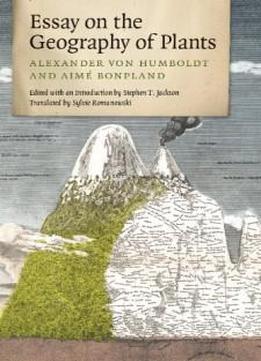
Essay On The Geography Of Plants
by Alexander von Humboldt /
2013 / English / EPUB
2.9 MB Download
The legacy of Alexander von Humboldt (1769–1859) looms large
over the natural sciences. His 1799–1804 research expedition
to Central and South America with botanist Aimé
Bonpland set the course for the great scientific surveys
of the nineteenth century, and inspired such essayists and
artists as Emerson, Goethe, Thoreau, Poe, and Church.
The legacy of Alexander von Humboldt (1769–1859) looms large
over the natural sciences. His 1799–1804 research expedition
to Central and South America with botanist Aimé
Bonpland set the course for the great scientific surveys
of the nineteenth century, and inspired such essayists and
artists as Emerson, Goethe, Thoreau, Poe, and Church.
The chronicles of the expedition were published in Paris
after Humboldt’s return, and first among them was the 1807
“Essay on the Geography of Plants.” Among the most cited
writings in natural history, after the works of Darwin and
Wallace, this work appears here for the first time in a
complete English-language translation. Covering far more than
its title implies, it represents the first articulation of an
integrative “science of the earth, ” encompassing most of
today’s environmental sciences. Ecologist Stephen T.
Jackson introduces the treatise and explains its enduring
significance two centuries after its publication.
The chronicles of the expedition were published in Paris
after Humboldt’s return, and first among them was the 1807
“Essay on the Geography of Plants.” Among the most cited
writings in natural history, after the works of Darwin and
Wallace, this work appears here for the first time in a
complete English-language translation. Covering far more than
its title implies, it represents the first articulation of an
integrative “science of the earth, ” encompassing most of
today’s environmental sciences. Ecologist Stephen T.
Jackson introduces the treatise and explains its enduring
significance two centuries after its publication.











